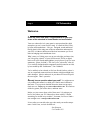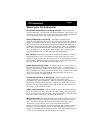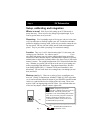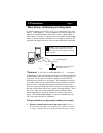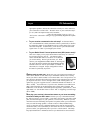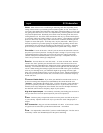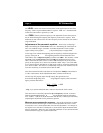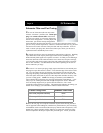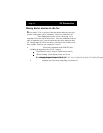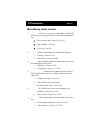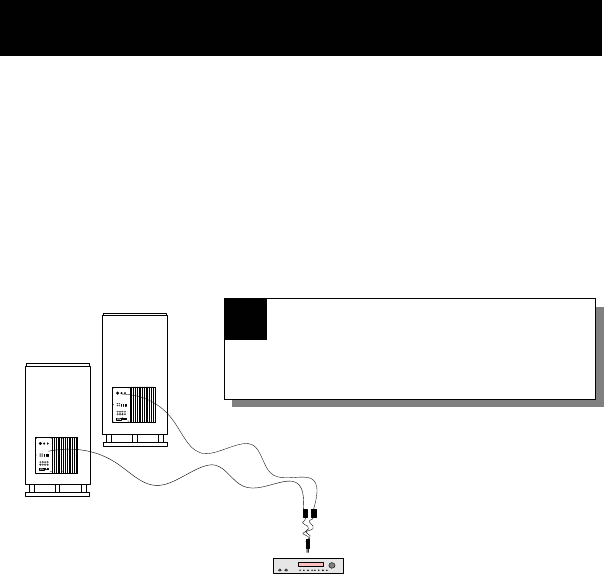
If you are running a pair of SVS’s (Fig. 2), you will need to use a stan-
dard “Y” cable adapter (c.) The best adaptor to use for this task has one
male RCA connection and two female RCA outputs. (Radio Shack ®
stocks them.) From the “Y” cable you can run a standard 75 Ohm signal
cable (d.) to each sub thus “splitting” the Low Frequency Effects (LFE)
and other bass signals from your receiver, thus feeding both subwoofers.
“
C
alibration”
It isn’t only for tech minded folks, it’s
key
to a proper
configuration of your home theater sound system. Fortunately, adjusting
channel balance (that’s all “calibration” really is) is as easy to do as it is
important. The first order of business is making sure your DD/DTS
surround sound system is set up properly. We recommend you consult
your audio/video receiver (or processor) manual to refresh on the proce-
dures to do this. Generally, this requires ensuring the receiver’s test
tones, or a special test disk (like
Video Essentials or Avia
) plays back at
the same volume from each of your system’s full range speakers. That’s
left, center, right, left surround and right surround speakers, and of
course the subwoofer (more on sub level in a second). Skip now to
Page 7 (“
PC-Ultra: Amp Features
”) if you aren’t familiar with your
sub’s amp, and come back to calibration.
T
hings to check as you get ready to calibrate your system:
•
A
re your speakers set correct to the correct “size”?
Your re-
ceiver/processor might allow you to indicate if your speakers are “Small”
or “Large”. Selecting the size accordingly will ensure bass goes to most
Page 5
More Setup, calibrating and integration
SV Subwoofers
Fig. 2
(d.)
(c.)
“Y” cable/splitter from
receiver
NOTE: Now is a good time to select if
you want “ON” (always on) or “AUTO
ON” which turns your sub on only when a bass
signal is present.
!
DD/DTS Processor/Receiver
(Subwoofer “Out”)




